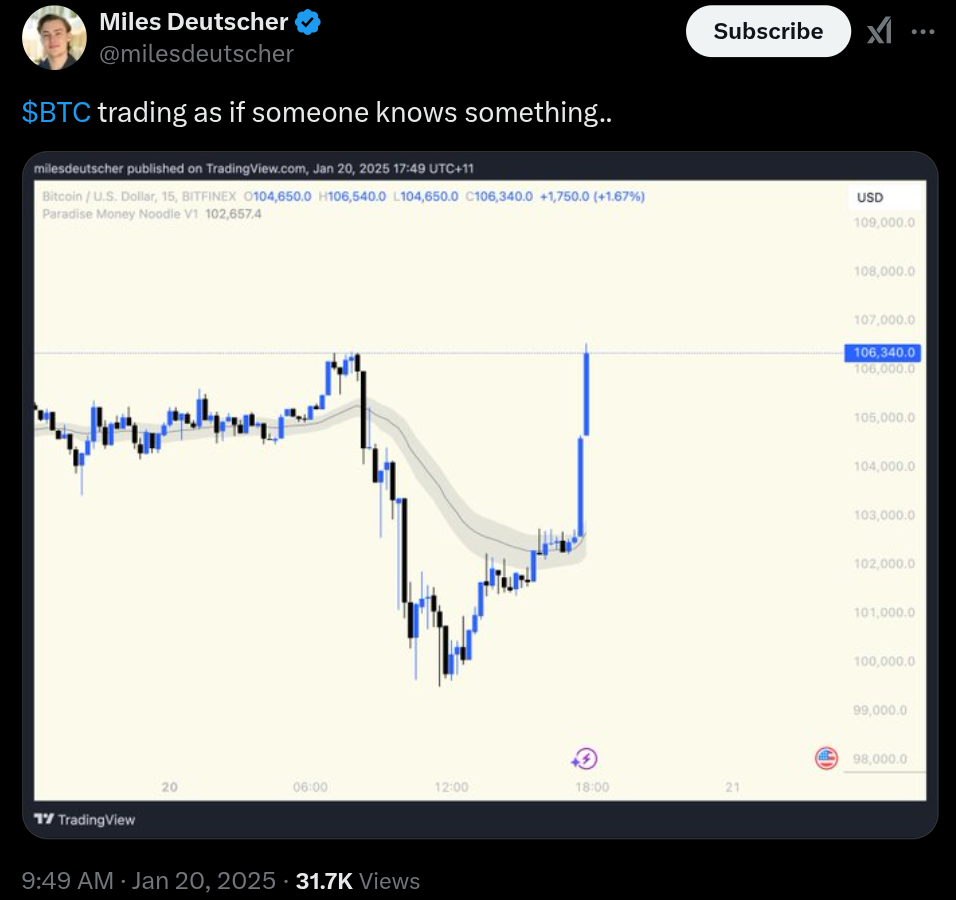Blockchain gaming 2025: Consolidation, Web3 integration, AI
In its latest Blockchain Gaming Industry Report, the Blockchain Game Alliance (BGA) released its forecast for the trends and shifts that will shape blockchain gaming in 2025. Key themes include infrastructure consolidation, seamless Web3 integration, artificial intelligence (AI)-powered personalization, and enhanced interoperability.
Established in 2018, the BGA comprises approximately 450 members, including prominent and emerging gaming studios, venture capital firms, service organizations, digital currency exchanges, guilds, major blockchain protocols, and individuals from the blockchain gaming community. Its annual survey captures the perspectives of industry professionals, shedding light on challenges, opportunities, and driving forces for the industry’s growth.
Consolidation of chains and infrastructure
According to the report, the Web3 gaming space is witnessing a surge in infrastructure development. However, BGA predicts this growth will lead to oversaturation, prompting consolidation.
“We’re already seeing a transition away from fragmented tools to a more unified approach,” Megan Doyle, Growth Marketing Director at Sequence, said. “Web3 solutions are consolidating under all-in-one platforms, with projects focusing on collaboration rather than reinvention. This fosters stronger, more engaged player bases and drives meaningful growth for Web3 gaming.”
The sheer number of chains today, nearly 16,000 tracked by CoinGecko, creates challenges for developers and users alike. Doyle highlighted the need for consolidation: “Chains could merge into integrated ecosystems, or interoperability innovations could create the unified experience users and builders need.”
Web3 elements operating in the background
BGA noted a shift toward seamless integration, where Web3 operates quietly in the background.
“We’re entering a phase where infrastructure must add value, not friction,” Jack O’Holleran, CEO and Co-founder of SKALE Labs, said.
Advances in onboarding and account abstraction are key. “Players won’t need to touch Web3 until there’s a strong incentive. Their assets will be more portable across the decentralized web,” O’Holleran added.
Kristofer Penseyres, CEO of DOGAMI, emphasized user experience: “The shift isn’t about following trends but delivering entertainment and innovative digital experiences. Just as people browse the web without understanding its technicalities, users will engage with Web3 games because of the exciting, seamless experiences they offer.”
AI-powered personalization
AI is poised to transform gaming, enabling fully on-chain games and autonomous worlds. Corey Wilton, Co-founder of Mirai Labs, cautioned against using AI merely as a buzzword.
“What matters is creating experiences previously impossible without AI,” he said. Studios leveraging AI to push boundaries could usher in a new gaming era.
AI’s ability to analyze player behavior may unlock personalized recommendations and dynamic interactions. This evolution is expected to redefine player engagement and game development.
Enhanced interoperability
The report also said that interoperability will move beyond asset transfers by 2025, allowing players to carry achievements, skills, and reputations across platforms.
“We’re excited about cross-IP interoperability enabled by blockchain,” Giulio Xiloyannis, CEO of Pixelmon, said. “Imagine an RPG-captured Pixelmon being used as a card in a TCG game, tradable between players. This creates economic movement across games.”
Jon Jordan of GamesTX pointed out the revolutionary potential of decentralized ownership: “Players owning and transporting assets across games aligns with decentralization’s broader vision. Achieving this requires collaboration between developers and a common tech stack.”
Decentralized esports
Decentralized systems could reshape esports, aligning them with community interests. Nokkvi Dan Ellidason, CFO of GAIMIN, noted the potential: “Decentralized esports offers a fairer, transparent ecosystem. Instant prize pool payments and advanced anti-cheat detection enhance trust and efficiency.”
Juan Allen, CMO of OLA GG, highlighted the challenges facing traditional esports: “Fans feel disconnected, and leagues are controlled by game developers. Web3 offers shared ownership and decentralized governance, fostering inclusivity and dynamism.”
Industry leaders foresee continued growth for 2025
The BGA also predicted the continued growth of blockchain gaming, driven by top-tier game advancements and collaborations between Web2 and Web3 ecosystems. Over 80% of respondents expressed confidence in staying within the industry over the next year. It added that growth is strong in South America, the Middle East, and Africa, signaling blockchain gaming’s expanding footprint.
The report added that digital asset ownership remains central, with 71.1% of respondents identifying it as blockchain gaming’s biggest benefit.
Challenges ahead
According to the BGA report, onboarding and user experience remain critical hurdles. Persistent misconceptions about blockchain games being scams also hinder adoption.
Small- to mid-sized studios transitioning into Web3 are a major growth catalyst.
“Web3 offers more monetization avenues for indie studios,” Sava Tesanovic, Co-founder of Echo of the Horizon, said.
SocialFi integration, memecoins, and community engagement
Social-first gaming is gaining traction.
“Socializing enhances emotional support and engagement,” Ann Chien, Partner at Infinity Ventures Crypto, noted. Heidi Christine, CMO of Pixels, added, “When players shape gameplay experiences, they find purpose and connection, turning gaming into more than just entertainment.”
Meanwhile, Christy Choi, Co-founder of AO Labs, pointed out memecoins’ unique role: “Memecoins accelerate Web3 adoption by fostering cultural touchpoints and community alignment, making the space more approachable.”
Evolving player rewards
The play-to-earn (P2E) model is evolving into reward systems that promote creativity and community-driven economies. Ubisoft’s (NASDAQ: UBSFF) Nicolas Pouard explained: “Play-to-earn revealed the limitations of its economic model but paved the way for vibrant economic experiments in live games.”
“Today, play-to-earn continues to evolve, focusing on incentivizing constructive behaviors rather than extractive ones, fostering creativity through user-generated content, and promoting more community-driven economies,” he added.
Transformative potential in 2025
The BGA report underscores blockchain gaming’s transformative potential in the coming years. From infrastructure consolidation to enhanced interoperability and decentralized esports, the industry is poised for innovation. As the Web3 gaming space evolves, the focus remains on delivering seamless, player-centric experiences that redefine gaming for a global audience.
Watch: Revolutionizing blockchain gaming with Vaionex’s Tegment
title=”YouTube video player” frameborder=”0″ allow=”accelerometer; autoplay; clipboard-write; encrypted-media; gyroscope; picture-in-picture; web-share” referrerpolicy=”strict-origin-when-cross-origin” allowfullscreen=””>
Source link
Written by : Editorial team of BIPNs
Main team of content of bipns.com. Any type of content should be approved by us.
Share this article:










